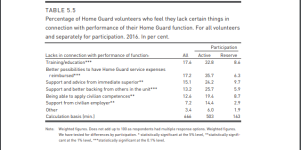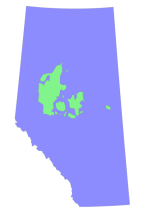daftandbarmy
Army.ca Dinosaur
- Reaction score
- 35,625
- Points
- 1,160
I like Champion. His book was well researched and well presented. If there is one weakness its that he carries the Reserves 2000 message on the expansion of the reserves. He puts out the number 60 - 100,000. I can't find that number on Reserves 2000 web page now but numbers close to that have been put forward before. It's basically created by taking the existing reserve units (roughly 150 and filling them to fuller establishments of 500-600 each) That's coupled with a separate but equal partner structure with the RegF
I see two large problems with that.
First the numbers. 60-100,000 is the equivalent of roughly 4 to 7 divisions (at 15,000 per division average) or 20 to 35 brigades at 3-5,000 each. Canada struggles to equip and train 4 RegF brigades. The ten current ResF brigades are unequipped and poorly trained. Are we merely recruiting people and giving them rifle drill and parades? Do we even have a need for 4 to 7 divisions?
In Post WW2 the Militia was authorized at 180,000 in 6 divisions and four independent armoured brigades equipped with much war surplus equipment. By 1954 the Militia had dwindled to 46,506 all ranks. Yes, it was a smaller population then, but still we'd be challenged to keep even 60,000 reservists. And we certainly can't (or won't) equip them.
Secondly is the question of the complexity of leadership. The skill levels needed to lead, both at the officer and Snr NCM level is no longer learnable on weekends and two week summer courses. Cementing that book learning with practical training is even more difficult. The reserves would essentially have to send large numbers of people on senior leadership training at exactly the point in their civilian careers where senior leaders have little time to devote. Alternatively there would need to be full-time leadership and instructors either from the RegF or created "in-house."
I'm entirely with Champion on all the problems he describes. I just can't buy the solution. In the numerous napkin force I've floated here there is one underlying constant. We have to start with the force we have, the number of RegF, the number of ResF, and the equipment we have and which is in the pipeline. We build a better force with that and once its established and working we determine if and how it can be expanded. Unfortunately this means amalgamation and an overall reduction in reserve units which Reserves 2000 fights hard against. Partially with reason. Previous amalgamations have not been rousing successes for a host of reasons. the challenge is to avoid those reasons the next time.
I agree. Given time and the requisite support.
Based on a 6 to 1 ratio on Class A to PY ratio, that should gain the RegF 4,000 folks tops. That's barely enough to replace all the Class Bs littering cubicles in Ottawa. I jest in part. Let @dapaterson give us the real figures but I'm pretty sure the field force wouldn't grow. Of course they might get enough $ selling all that prime downtown real estate that the armouries are on to build that Star Top replacement headquarters in Ottawa.

To expand like that, you'd also need to spend billions on infrastructure.
600 troops are not going to parade in a 1915 (or earlier) vintage armoury, for one








